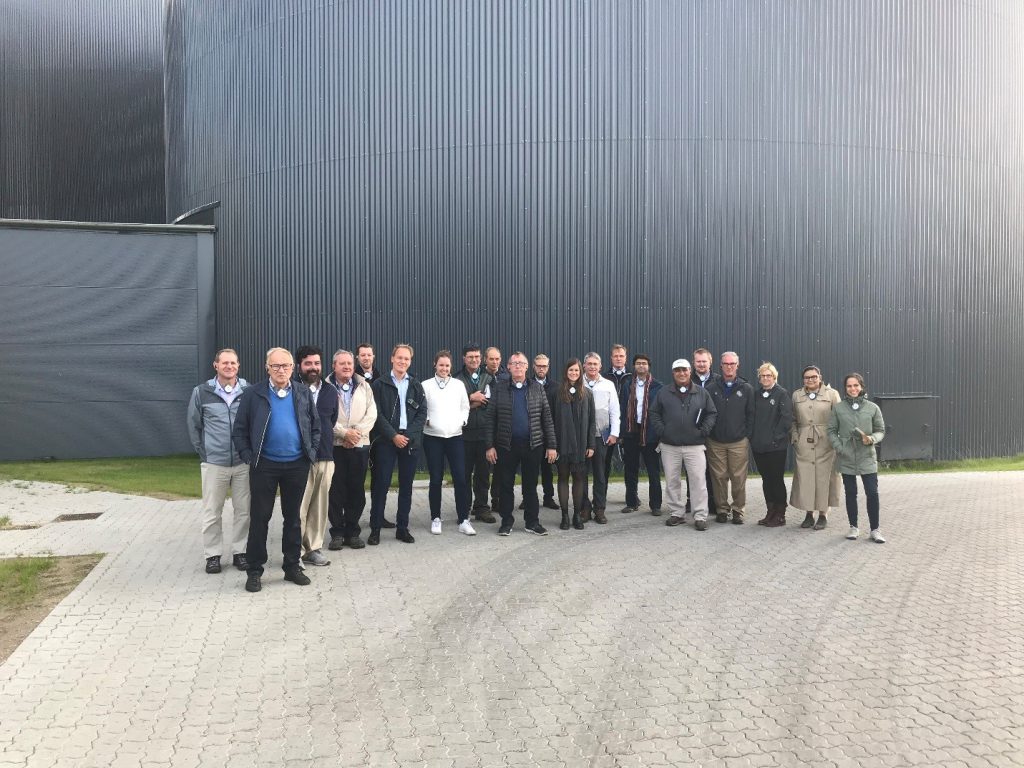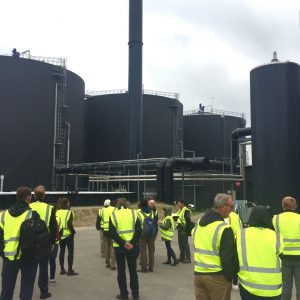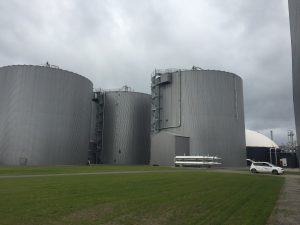By Geetika Joshi, PhD
I was honored to represent CDFA last week in Denmark as part of a US delegation sent to learn about he use of biogas as a renewable energy source.
I joined a contingent of 14 people from all over the US, and we traveled to a number of cities to study successful digester projects generating biogas and utilizing materials like animal waste and food waste. One plant, in the Danish city of Brande, is the largest biogas plant in the country and produces fertilizer products from that are certified for use in organic farming operations
In the city of Aarhus, the US Delegation met with several companies that shared case studies of successful digestion biogas projects within and outside of Denmark. Their experiences underscore the importance of integrated research and development with real-world operations. This was a recurring theme that we encountered during our trip.
We also met with Inbiom, an innovation cluster funded by the Danish Ministry of Education and Science. They shared with us their innovative approach of optimizing biomass use. We learned that some of the best uses of biomass are considered in terms of their socio-economic value. In the context of agriculture, this idea was apparent in the emphasis of the Danish technologies on nutrient recovery after the capture of biogas from animal manure and other waste streams. We observed this in action at the biogas plant at Aarhus University, which is one the largest research-scale biogas plants in the world.
We had the opportunity to observe a novel food waste separation method that enabled the separation of plastics, metal, glass and rocks from food waste. Each of these separated materials are recycled and the remaining food materials form the feedstock for biogas production. This process resulted in a significant reduction of unusable waste – lowering the number to about 10 percent, an impressive achievement that further showcases the high efficiency and Danish emphasis on the circular economy.
Our activities ended with a workshop with Danish subject matter experts to brainstorm over key challenges for biogas production in the United States, including financial risk, optimizing for mixed waste streams (co-digestion), and handling of manure on agricultural operations. The latter was of particular interest due to California’s goal of reducing methane emissions from dairy and livestock operations by 40% of 2013 levels by 2030. We worked together to think of potential next steps for some of the challenges we might encounter.
As we bade farewell to Denmark, I could not help but admire the Danish commitment to biogas-based energy security and nutrient cycling. Their approach to large problems follows the ‘quadruple helix’ approach – requiring holistic coordination between government, industry, academia and communities to find comprehensive, long-term, sustainable solutions.
Dr. Geetika Joshi is a Supervising Senior Environmental Scientist who manages CDFA’s Dairy Digester Research and Development Program and its Alternative Manure Management Program – both housed in the Office of Environmental Farming and Innovation.





